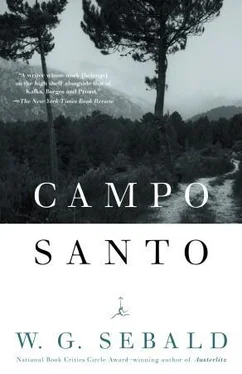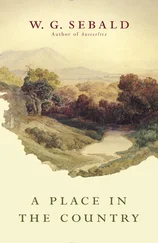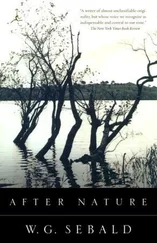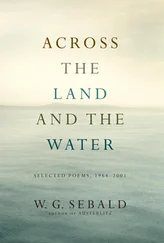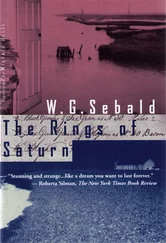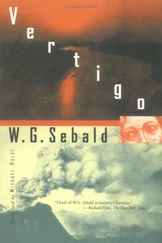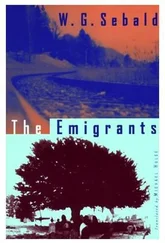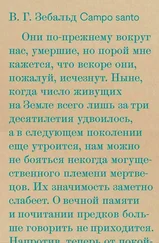On the walls hung cameos and other miniatures, a series of colored steel engravings of the battles of Friedland, Marengo, and Austerlitz, and a genealogical tree of the Bonaparte family in a heavy frame covered with gold leaf, in front of which I finally stopped. A huge oak towered up from the brown earth against a sky-blue background, and hanging from its twigs and branches were little white clouds cut from paper, bearing the names and dates of all members of the imperial house and the later descendants of the Napoleonic clan. They were all assembled here — the king of Naples, the king of Rome, and the king of Westphalia; Marianne Elisa, Maria Annunciata, and Marie Pauline, the most beautiful and lighthearted of the seven siblings; the unfortunate Duke of Reichstadt, the ornithologist and ichthyologist Charles Lucien, Plon-Plon, son of Jérôme, and Mathilde Letizia, his daughter; Napoleon III with his twirled mustache, the Bonapartes of Baltimore; and many more.
Without my noticing the Maréchale Ney had come up beside me, perhaps seeing my obvious emotion as I examined this genealogical work of art, and told me in a reverent whisper that this création unique had been made toward the end of the last century by the daughter of a notary in Corte who was a great admirer of Napoleon. The leaves and sprays of flowers adorned with a few butterflies at the bottom of the picture, said Madame la Maréchale, were genuine dried plants from the maquis , sempervivums, myrtles, and rosemary, and the dark, sinuous tree trunk standing out in relief against the blue background was braided from the girl’s own hair. Whether out of love for the Emperor or for her father, she must have devoted endless hours to her work.
I nodded attentively at this explanation, and stayed there for some time longer before I turned, left the room, and went down to the first floor, where the Bonaparte family had lived after they first came to Ajaccio. Carlo Bonaparte, Napoleon’s father, was secretary to Pasquale Paoli, [2] Pasquale Paoli (1725–1807) was known as the “Father of the Corsican Nation.” He drew up the Corsican constitution.
and after the defeat of the patriots at Corte in their unequal struggle against the French troops he had moved to the seaport of Ajaccio for safety’s sake. Accompanied by Letizia, who was pregnant with Napoleon at the time, he traveled through the wild mountains and ravines of the interior, and I imagine that the two tiny figures riding their mules through that overwhelming panorama, or sitting alone by a small campfire in the darkness of the night, must have resembled Mary and Joseph in one of the many depictions that have come down to us of the Flight into Egypt. At any event, if there is anything in the theory of prenatal experience, then this dramatic journey explains a good deal about the character of the future Emperor, not least the fact that he always did everything with a certain precipitate haste, even in the matter of his own birth, when he was in such a hurry that Letizia was unable to reach her bed and had to bring him into the world on a sofa in what is known as the Yellow Room.
Perhaps it was with these remarkable circumstances attending the beginning of his life in mind that Napoleon later made his beloved mother a present of a Nativity scene in rather doubtful taste, carved from ivory and still on view at the Casa Bonaparte. During the 1770s and 1780s, while the Corsicans were adjusting to the new regime, neither Letizia nor Carlo can of course have dreamed that the children who sat at the dining table with them daily would eventually rise to the rank of kings and queens, or that the time would come when the most hot-tempered of them, young Ribulione, a lad always involved in local street fights, would wear the crown of a vast empire extending over almost the whole of Europe.
But what can we know in advance of the course of history, which unfolds according to some logically indecipherable law, impelled forward, often changing direction at the crucial moment, by tiny, imponderable events, by a barely perceptible current of air, a leaf falling to the ground, a glance exchanged across a great crowd of people. Even in retrospect we cannot see what things were really like before that moment, and how this or that world-shaking event came about. The most precise study of the past scarcely comes any closer to the unimaginable truth than, for instance, a far-fetched claim such as I once heard made by an amateur historian called Alfonse Huyghens, who lived in the capital of Belgium and had been pursuing his research on Napoleon for years; according to him, all the cataclysmic events caused by the Emperor of the French in the lands and realms of Europe were to be traced solely to his color blindness, which made him unable to tell red from green. The more blood flowed on the battlefield, this Belgian scholar told me, the greener Napoleon thought the grass was growing.
In the evening I walked along the Cours Napoléon, and then sat for two hours in a small restaurant not far from the Gare Maritime with a view of the white cruise ship. Over coffee I studied the advertisements in the local paper and wondered whether to go to the cinema. I like to visit the cinema in foreign towns, but neither Judge Dredd at the Empire, USS Alabama at the Bonaparte, nor L’Amour à tout prix at the Laetitia seemed to me the right way to end this day. At about ten, therefore, I was back in the hotel where I had taken a room late that morning. I opened the windows and looked out over the rooftops of the town. Traffic was still driving down the streets, but suddenly everything fell silent, just for a few seconds, until one of those bombs that frequently go off in Corsica exploded with a short, sharp bang, obviously only a few streets away. I lay down and soon fell asleep, with the sound of the firefighters’ sirens howling in my ears.
My first walk the day after my arrival in Piana took me out on a road that soon begins falling away steeply in terrifying curves, sharp bends and zigzags, leading past almost vertical rocky precipices densely overgrown with green scrub, and so down to the bottom of a ravine opening out into the Bay of Ficajola several hundred meters below. Down there, where until well into the postwar period a community of twelve or so fisher-folk lived in dwellings roughly cobbled together and roofed with corrugated iron, some of which now have their doors and windows boarded up, I spent half the afternoon with a few other tourists from Marseille, Munich, or Milan who had installed themselves with their picnics and assorted items of practical equipment in couples or family groups, at regular distances from each other, and I lay motionless for a long time by the little quicksilver stream that even now, at the end of summer, ran constantly down over the last granite steps of the valley floor, with that proverbial babble familiar to me from some dim and distant past, only to give up the ghost without a sound on the beach and seep away. I watched the sand martins circling the flame-colored cliffs high above in astonishingly large numbers, soaring from the bright side of the rocks into the shadows and darting out of the shadows into the light again, and once that afternoon, which for me was filled with a sense of liberation and appeared to stretch endlessly away in every direction, I swam out to sea with a great sense of lightness, very far out, so far that I felt I could simply let myself drift away into the evening and so into the night. But as soon as, obeying the strange instinct that binds us to life, I turned back after all and made for the land which, from this distance, resembled a foreign continent, swimming became more and more difficult with every stroke, and not as if I were laboring against the current that had been carrying me on before; no, I was inclined to think that I was swimming steadily uphill, if one can say so of a stretch of water. The view before my eyes seemed to have tipped out of its frame, was leaning toward me, swaying and flickering of its own accord, with the upper rim of the picture skewed several degrees in my direction and the lower rim skewed away from me to the same extent. And sometimes I felt as if the prospect towering so menacingly in front of me was not a part of the real world but the reproduction of a now insuperable inner faintness, turned inside out and shot through with blue-black markings. Even harder than reaching the bank was the climb later up the winding road and the barely trodden paths which here and there link one curve in the road to the next in a direct line. Although I placed one foot in front of the other only slowly and very steadily, the afternoon heat building up between the rock walls very soon brought sweat running down my forehead, and the blood pulsed in my neck as it did in the throats of the lizards sitting everywhere in my path, frozen in mid-movement with fear. It took me a good hour and a half to climb to Piana again, but once there I could walk as if weightlessly, like a man who has mastered the art of levitation, past the first houses and gardens and along the wall of the plot of land where the local people bury their dead. When I passed through the iron gate, which squealed on its hinges, this proved to be a rather desolate graveyard of the kind not uncommon in France, where you have the impression not so much of an antechamber to eternal life as of a place administered by the local authority and designed for the secular removal of waste matter from human society. Many of the graves standing in untidy rows all over the dry slope, their lines everywhere broken or slightly displaced, have already sunk into the ground, and are partially overlapped by later additions. Hesitantly, and with that touch of reluctance that one feels even today in approaching the dead too closely, I clambered over crumbling plinths and edgings, tombstones shifted out of place, ruinous masonry, a crucifix fallen from its mount and disfigured by rust marks, a leaden urn, an angel’s hand — silent fragments of a town abandoned years ago, and not a shrub or a tree to give shade anywhere, no thujas or cypresses of the kind so often planted in southern cemeteries, whether for comfort or as a sign of mourning. At first sight I really believed that the only reminders in the Piana graveyard of the nature which, we have always hoped, will endure long after our own end, were the artificial purple, mauve, and pink flowers, obviously pressed upon their customers by French undertakers, made of silk or nylon chiffon, of brightly painted porcelain, wire, and metal, appearing not so much a sign of enduring affection as the final emergence of a kind of proof that, despite all assurances to the contrary, we offer our dead only the cheapest substitutes for the diverse beauty of life. Not until I looked more carefully around me did I notice the weeds — the vetch, wild thyme, white clover, yarrow and chamomile, cow wheat, yellow oat grass, and many other grasses with names unknown to me — that had grown around the stones to form actual herbariums and miniature landscapes, still showing some green but already half dead, and far lovelier, I thought to myself, than the ornamental funerary plants sold by German cemetery florists, usually consisting of heathers, dwarf conifers, and pansies of absolutely standard shape, planted in spotless, soot-black soil in strict geometrical rows, as I still see them in unwelcome memories of my now distant childhood and youth in the foothills of the Alps. But here and there among the thin flower stems, the blades and ears of grass in the graveyard of Piana, a departed soul looked out from one of those oval sepia portraits set in thin gilded frames which until the sixties used to be placed on graves in the Mediterranean countries: a blond hussar in his high-collared uniform tunic; a girl who died on her nineteenth birthday, her face almost extinguished by the sun and the rain; a short-necked man with his tie in a large knot, who had been a colonial civil servant in Oran until 1958; a little soldier, forage cap tilted sideways on his head, who came home badly wounded from the futile defense of the jungle fortress of Dien Bien Phu. In many places weeds already cover the polished marble votive tablets on the newer graves, most of which bear only the brief inscription Regrets or Regrets éternels in neatly curving characters which might have been copied by a child from a manual of handwriting. Regrets éternels —like almost all the phrases in which we express our feelings for those who have gone before, it is not without ambiguity, for not only does the announcement of the everlasting inconsolability of the bereaved confine itself to the absolute minimum, it also sounds, if one stops to consider it, almost like an admission to the dead of guilt, a halfhearted request for forbearance made to those laid in the earth before their time. Only the names of the dead themselves seemed to me clear and free of any ambiguity, not a few of them being as perfect in both significance and sound as if those who once bore them had been saints in their own lifetime, or messengers from a distant world devised by our higher yearnings, visiting this one only for a brief guest performance. Yet in reality they, too, those who had borne the names Gregorio Grimaldi, Angelina Bonavita, Natale Nicoli, Santo Santini, Serafino Fontano, and Archangelo Casabianca, had certainly not been proof against human malice, their own or that of others’. Another striking feature of the design of the Piana graveyard, and one that revealed itself only gradually as I walked among the graves, was the fact that in general the dead were buried in clans, so that the Ceccaldi lay beside the Ceccaldi and the Quilichini beside the Quilichini, but this old order, founded on not many more than a dozen names, had been forced some time ago to give way to the order of modern civil life, in which everyone is alone and in the end is allotted a place only for himself and his closest relations, a place that corresponds as accurately as possible to the size of his property or the depth of his poverty. If one cannot speak of a wealth of ostentatious funerary architecture anywhere in the small communities of Corsica, even a place like the Piana graveyard has a few tombs adorned with pediments where the more prosperous have found an appropriate final resting place. The next social class down is represented by sarcophaguslike structures made of granite or concrete slabs, depending on the assets of those laid to rest there. Stone slabs lie on the ground above the graves of the dead of even less importance. And those whose means are insufficient even for such a slab must be content with turquoise or pink gravel kept in place by a narrow border around it, while the very poor have only a metal cross stuck in the bare earth, or a crucifix roughly welded from tubing, perhaps painted bronze or with a gold cord wound around it. In this way the graveyard of Piana, a place where until recently only the more or less poverty-stricken lived, now resembles the necropolises of our great cities in reflecting all gradations of the social hierarchy as marked by the unequal division of earthly riches. The biggest stones are usually rolled over the graves of the richest people, for it is to be feared that they are the most likely to begrudge their progeny their inheritance and to try to take back what they have lost. The mighty blocks of stone erected above them for the sake of security are, of course, with self-deluding cunning, disguised as monuments of deep veneration. Significantly, such expense is unnecessary on the death of one of our lesser brethren, who can perhaps call nothing his own at the hour of his death other than the suit in which he is buried — or so I thought as I gazed out over the highest-standing row of graves, looking across the Piana cemetery and the silver crowns of the olive trees beyond the wall, and so on to the Gulf of Porto shining up from far below. Something that particularly surprised me about this resting place of the dead was that not one of the funerary inscriptions was more than sixty or seventy years old. I discovered some months later that the reason lay in one of those strange Corsican situations involving blood feuds and banditry, finding this information in what I consider in many respects a model study by Stephen Wilson, one of my professional colleagues, who presents the extensive material he has assembled during many years of research to his readers with the greatest imaginable care, clarity, and restraint. [3] Feuding Conflict and Banditry in Nineteenth-Century Corsica (Cambridge University, 1988).
Читать дальше
